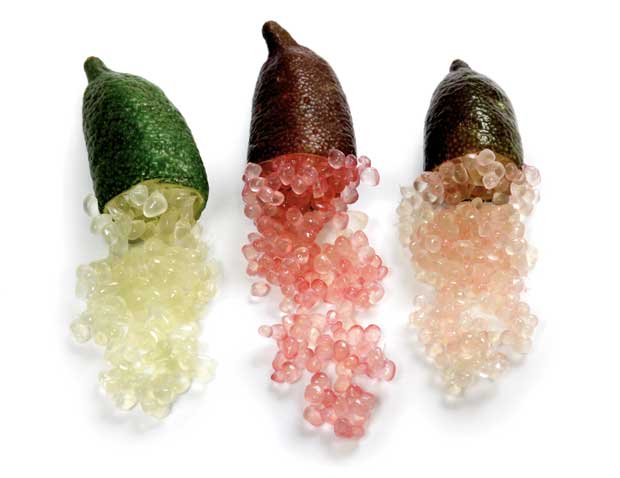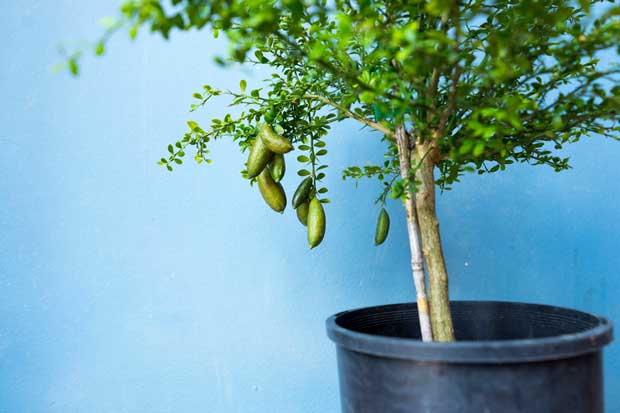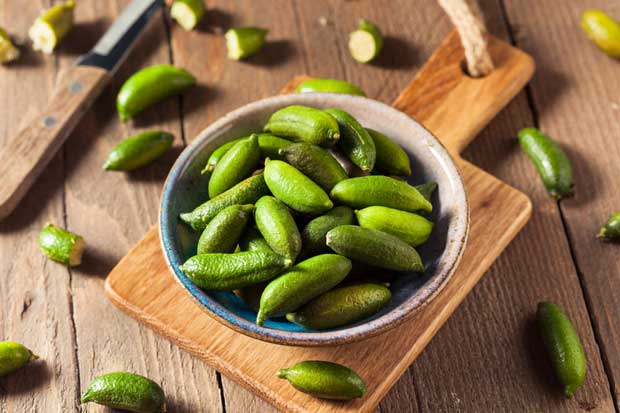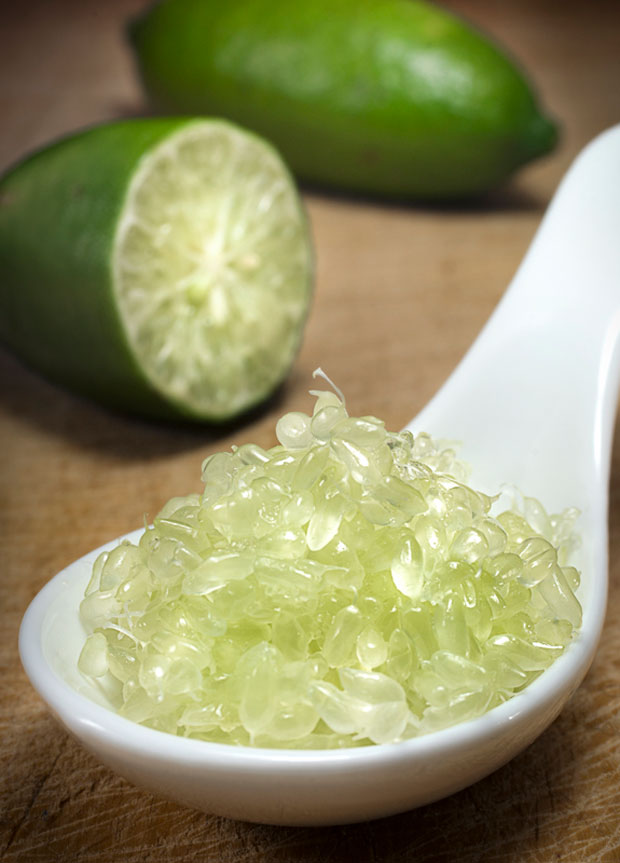Introducing the new foodie favourite finger limes — how to grow them in New Zealand

Tagged “citrus caviar”, finger limes are a fresh take on a standard citrus.
Words: Jane Wrigglesworth
Nicknamed the caviar of citrus fruit, the finger lime is an exceptional Australian import, fast becoming a must-have in home orchards. Highly prized by chefs and home cooks, it stands out for its juicy, flavoursome, caviar-like “beads”. Think classic lime with a touch of lemon tartness thrown in.
“Their promotional tag these days is citrus caviar,” says Peter Cave of Peter Cave Nursery. “This is very appropriate. When you cut the gherkin-shaped fruit in half and roll or squeeze the cut end, little glistening sacs of juice fall out.”
GROWING FINGER LIMES IN NEW ZEALAND
The Australian finger lime tree doesn’t look much like a standard lime tree, with fruit shaped like fingers and ranging in colour from dark purple to green, to greenish-yellow and to pink (in New Zealand they will most likely be green, but there may be variances).

The leaves are small, rounded and dark glossy green, unlike a typical lime tree, which has larger, oval-shaped leaves. The plants can grow to 10 metres in their natural habitat, though in New Zealand it’s usually two to three.
Thorny branches are a downside – prickles are small, sharp and unrelenting, so be mindful of small children or pets. The trees also aren’t frost-hardy; keep in a sheltered spot or grow in pots that can be moved indoors over winter.
“They do grow well in larger containers and make an unusual fruiting tree for the patio,” says Neville Chun, who has been selling Australian finger limes in New Zealand for the past five years or so.
“I have found them to be slightly cold-sensitive, which slows down growth and fruit development. They develop and become fruitfully mature faster when growing north of Auckland.”
Neville, who has 100+ trees in the ground at his Horowhenua orchard for commercial harvesting, says the plants are unlikely to start fruiting before they are four years old.

“Our trees, four years old now, have been fruit shy but have grown well and are standing approximately two metres tall. This season we finally have fruit development, so we’re likely to have a small commercial harvest to offer late winter/spring.”
As per all citrus, the plants require perfect drainage, deep organically enriched soils, and warm sheltered sunny spots, says Neville. They should be fed just like other citrus; that is, little and often with a proprietary citrus fertilizer from September to March.
And just like other citrus, they are susceptible to scale.
“I don’t know how they manage to find a spot to sit and suck with the millions of thorns on the finger lime, but they do. They mostly congregate on the main trunk. Repeat sprays of garden oil deals to them.”
The fruit itself can be eaten straight from the tree for an intense, refreshing treat, or the juicy beads can be added to a salad or a savoury dish. They can also be used to make pickles and marmalade or dried to make a spice.
“We love sprinkling these little flavour bombs on salads,” says Peter, who also has finger limes for sale at his nursery. “They also go very well in G and Ts.”
Neville Chun also enjoys their tart flavour.
“The juicy free-flowing vesicles of Australian finger limes contain an intense, sour, lime-tasting juice that pops in your mouth when you eat them. You can use them as a garnish on seafood, desserts, and in drinks for a unique textural/flavour element.

“My favourite is to make up a good-quality vinaigrette dressing and mix the fresh finger lime ‘caviar’ into the dressing. Spoon the dressing over fresh oysters, sashimi salmon or salads.”
The peel of the Australian finger lime is thin and leathery and serves no purpose. But this versatile fruit is a fun and exciting addition to the garden or home orchard. Its distinct shape and flavour will have friends and neighbours intrigued, as well as all the local chefs.
Availability
Peter Cave Nursery
www.petercavenursery.co.nz
Kings Plant Barn
https://www.kings.co.nz/
MORE CITRUS IDEAS

